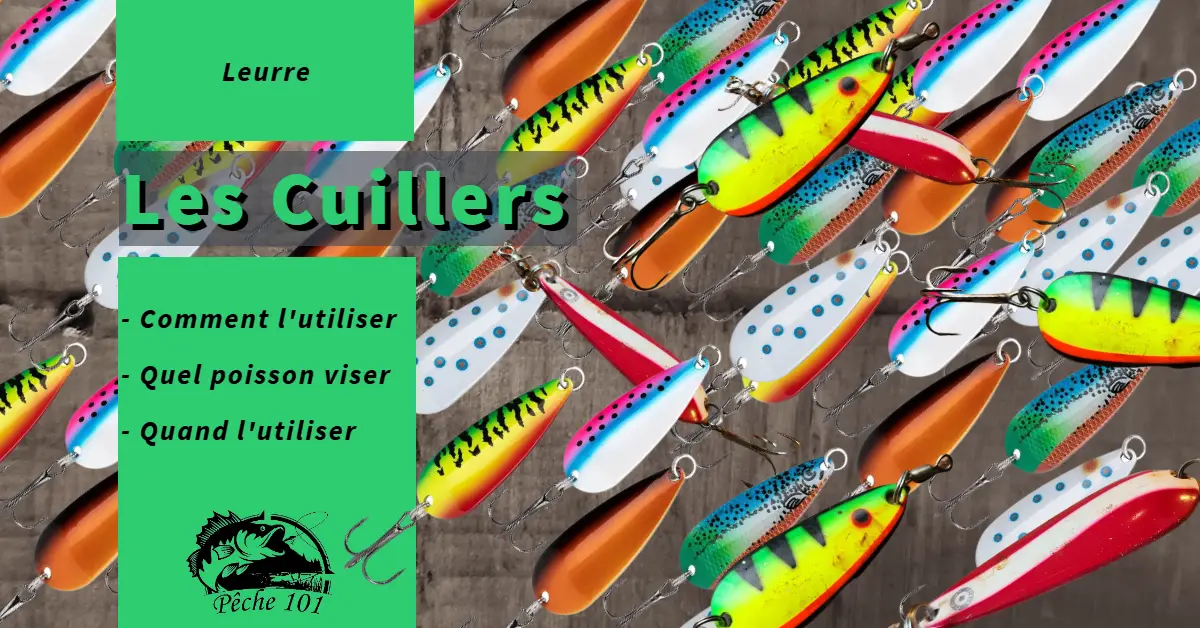Spoons are an essential part of your tackle box.
The different types of spoon include the throwing spoon, the trailing spoon, the weedless spoon, the jigger and the surface model.
They are made from a variety of materials, including copper, steel, plastic, brass and wood.
Each type of spoon is suitable for a specific fishing technique and can be used to target a wide range of fish. a variety of fish species such as trout, pike and walleye.
When choosing a spoon for fishing, it's essential to consider the type of fish you want to catch, the fishing environment and your own technique preferences.
Understanding the different types of spoons and how to use them will help you optimize your fishing experience and get the most out of this exciting activity.
Article content
Types of Fishing Spoons
Weedless spoons (Anti-Herbs)
Designed for waters with lots of aquatic weeds, thick blankets, wood or logs.
They usually have a single hook welded to their body with a guard wire to prevent snagging.
Retrieval methods include "twitching and pausing" or "straight retrieve".
It is also common to add an attractant such as a plastic worm.
Weedless spoons typically weigh between ¼ oz. and 11/8 oz.
Traditional Casting Spoons
These spoons have oval, curved bodies that create a back-and-forth motion underwater.
They are effective for targeting species such as pike, walleye and bass.
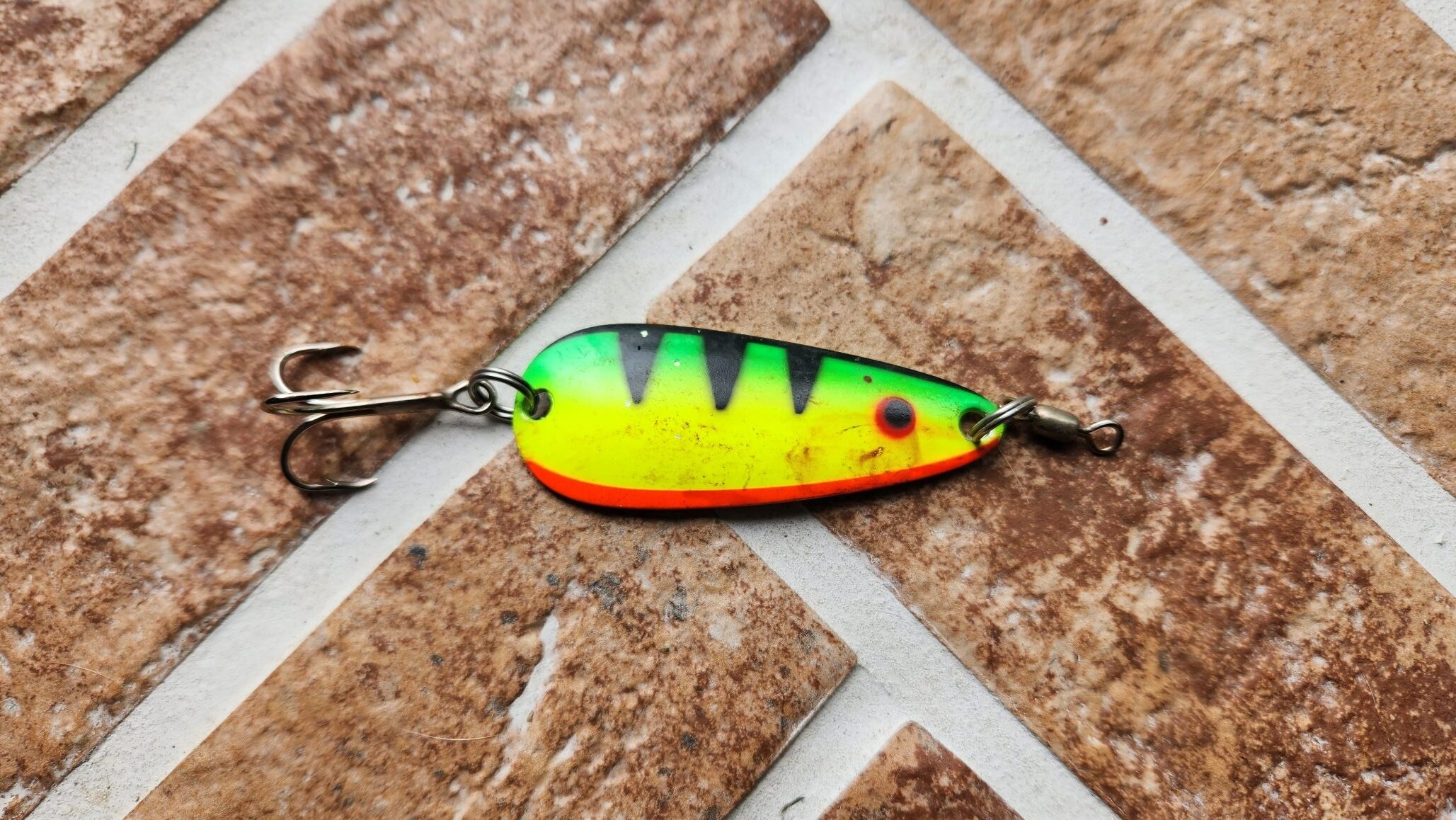
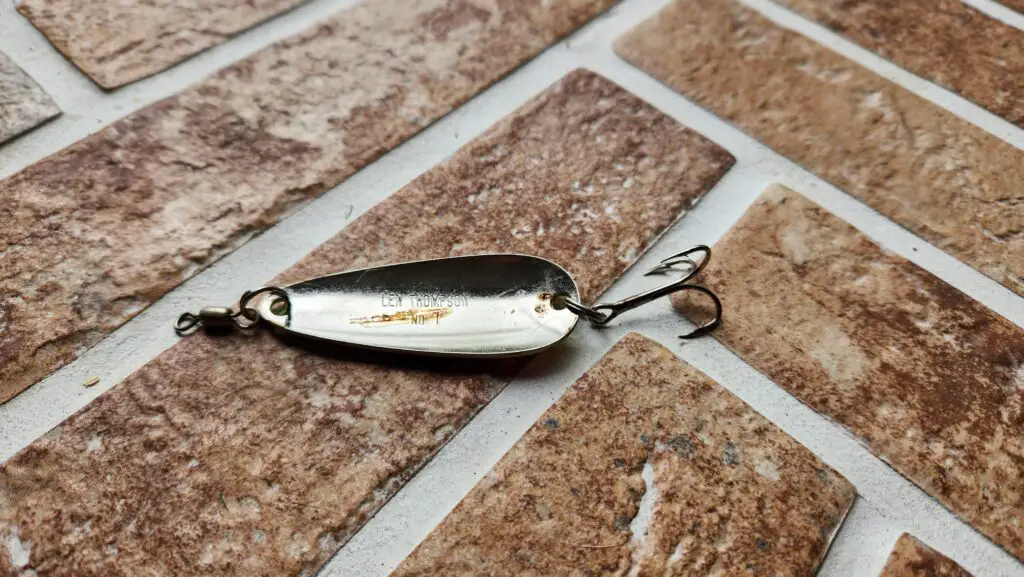
The most common weights for these spoons are ¼ to ¾ oz., although some can weigh up to 3 oz. for larger fish like muskellunge.
Trolling Spoons
Light and thin, these spoons are often lighter than their casting counterparts, with a typical weight of 1/8 oz. for a 3-inch spoon.
They are specially designed for trolling and are effective for targeting species such as walleye, trout and salmon.
Jigging spoons
Perfect for vertical fishing in the depths, these spoons are heavy, thick and produce an attractive flash when animated.
This type of spoon is mainly used for ice fishing.
Fish like bass (black perch) or deep-water walleye are often targeted with these spoons.
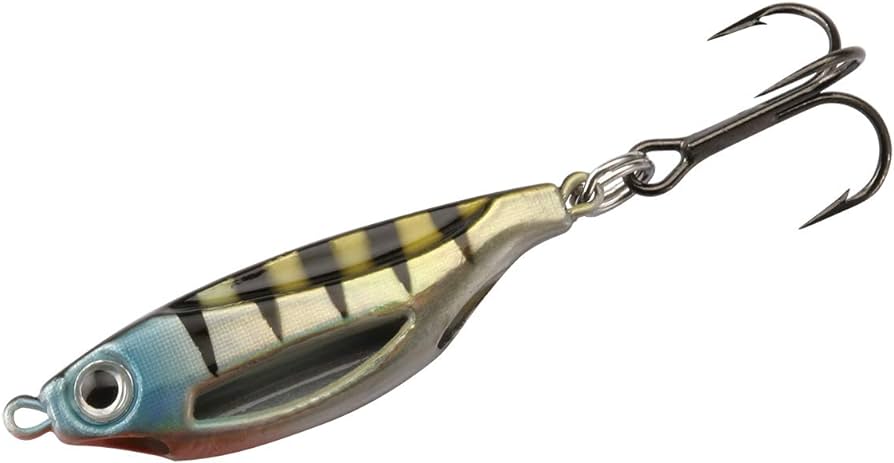
We recommend using 12-20 lbs. of low-stretch fishing line with a fast-action rod to maximize their effectiveness.
Spoons in Line
Inline spinners are a type of spoon that can be used for lures indispensable for freshwater anglers. This article guides you through how to use them, what fish they can catch, and when to use them.
How to use in-line spoons
Choosing the right size and color
Choose according to water clarity and size of target fish.
- Clear waterChoose natural colors.
- Cloudy waterUse bright colors.

Image from: outdoorsgap.com
Throwing technique
- LaunchThrow far and recover slowly.
- AnimationAlternate speed and depth.
What freshwater fish they can catch
Pike
Pike are often attracted to these lures.
Perch
The perch responds well to small in-line spoons.
Trout
Trout can be caught using natural colors.
When to use in-line spoons
Season
- SpringExcellent for catching active fish.
- SummerUseful in the morning and evening.
- AutumnIdeal for fish in search of food.
Weather conditions
- CloudyGlossy spoons work well.
- Sunny: Choose spoons in natural colors.
Spoon materials
Silver Spoons
Silver is a material commonly used to make fishing spoons.
Silver spoons offer several advantages.
Firstly, they are highly reflective and easily attract the attention of fish such as trout, salmon, pike or walleye.
Secondly, silver spoons are also corrosion-resistant, making them durable and reliable for use in fresh or salt water.
It's important to note that silver spoons can be more expensive than those made from other materials.
Their performance and durability can offset the initial cost.
To care for your silver spoons, simply clean them after each use and store them in a dry place.
Copper coppers
Copper spoons also offer fishing advantages.
They are renowned for their ability to reflect light, making them attractive to fish.
Copper spoons are particularly suited to fishing in turbid waters, where their warm, golden hue can stand out better from other lures.
What's more, copper spoons are often less expensive than silver ones, making them an affordable option for anglers of all levels.
It's important to know that copper spoons can oxidize and tarnish over time, especially when exposed to salt water.
To avoid this, you should clean and dry your spoons thoroughly after each fishing trip.
You can also use specific copper cleaning products to preserve their shine and appearance.
The choice between these materials depends on personal preference, budget and fishing conditions.
Targeting fish species
Trout fishing with spoon
To target trout, you'll need to choose spoons adapted to this species.
Spoons in sizes #8 to #2 (1/8 - 1/2 oz) are particularly suitable for fishing for small salmonids, such as trout.
Choose bright colors to attract their attention.
Don't hesitate to add an earthworm to the spoon to increase your chances of success.
Trout are renowned for being attracted by small lures and realistic swimming action.
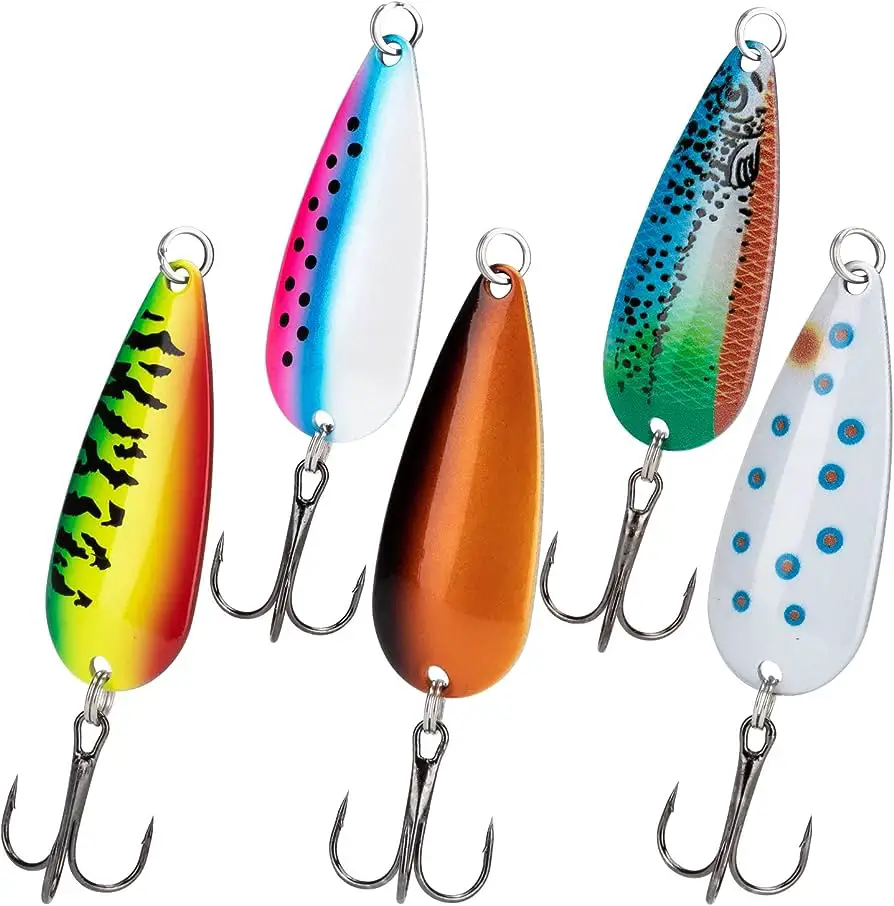
Pike fishing with a spoon
Pikes are carnivores appreciating larger prey.
So, to target this species, you can choose larger spoons, often over 1/2 oz.
Don't forget to use attractive colors, such as red, silver or gold, to capture the attention of these predators.
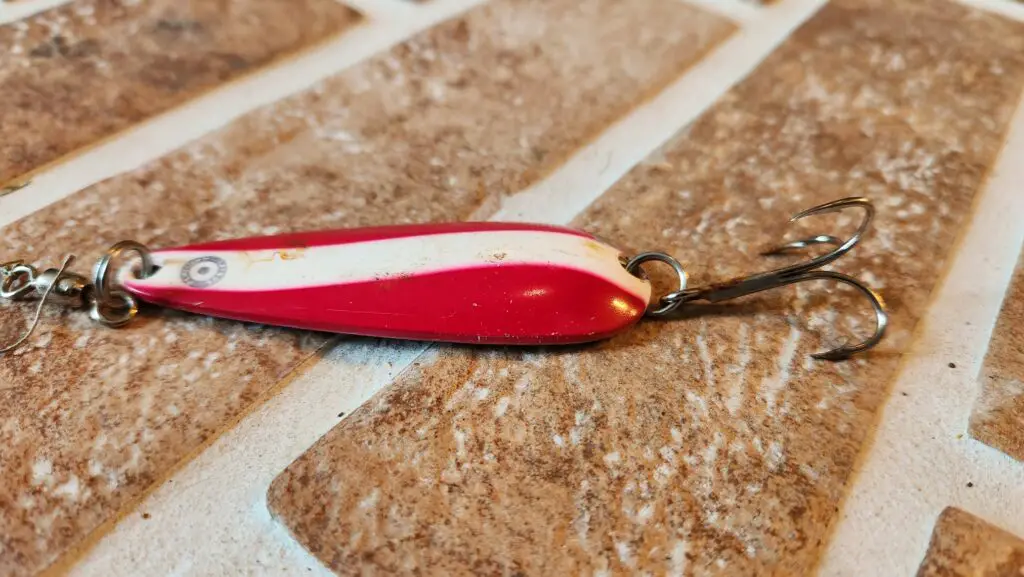
Pike are aggressive fish, so they like lures that move quickly and irregularly.
Walleye fishing with spoons
Walleye, also known as zander, is a species that can be targeted using medium-sized spoons.
Choose models with natural colors, such as green, brown or silver, as walleye is a rather wary fish.
It's important to adjust the retrieve speed and vary the animations to appeal to this species.
Walleyes may be attracted by lures imitating small fish, such as vibrating spoons, with a realistic and attractive swimming action.
Fishing Equipment
Line and Wire
To fish with a spinner, you need to choose the right line and wire for your needs.
Choose a strong line, suitable for the type of fish you want to catch.
The wire must be fine, strong and unobtrusive to avoid being spotted by the fish.
Use monofilament or fluorocarbon thread for best results.

Depending on fishing conditions, you can adapt the length of your line to optimize spoon performance.
Hook
For the different types of spoons (spinning, trolling, weedless, jigging and surface), it is important to choose a hook suited to the size and shape of the spoon, as well as to the type of fish targeted.
Sharpened treble hooks are commonly used for metal spoons, offering a better grip on the fish.
Swivels, especially rolling swivels, reduce the risk of tangling the line and ensure smooth swimming of the lure.
Make sure your rod and reel are properly adjusted to ensure a good presentation of your spoon and maximize your chances of success.
Frequently asked questions
What's the best spoon for trout fishing?
For trout fishing, spinners are generally effective. Commonly used models include Colorado and Indiana spoons, which imitate the movement of prey in the water.
How does wobble fishing work?
Wobbling spoon fishing involves using a spoon that has a sinuous shape and undulates as it is pulled through the water, imitating wounded prey. This movement attracts predatory fish, tempting them to attack.
How do you mount a spoon with a sinker?
To rig a spoon with a sinker, first attach the sinker to the spoon ring, then connect the spoon to the leader with a swivel. This set-up allows you to cast further or sink faster in the water.
Which rod is ideal for spoon fishing?
When spoon fishing, it's best to use a light, sensitive rod that allows you to feel bites and control the trajectory of the spoon. A rod with a tip action or moderate action will be suitable for this fishing technique.
Which spoon to use for each type of fish?
The choice of spoon depends on the type of fish you wish to catch. For example, spinners are suitable for trout, bass and walleye, while rippling spoons are more suited to pike, bass and muskie.
How to choose the right fishing spoon?
To choose the right spoon, consider several criteria: spoon size and weight, shape and color, as well as the depth at which you wish to fish. Don't hesitate to experiment with different models and adjust your choice according to the results obtained.
